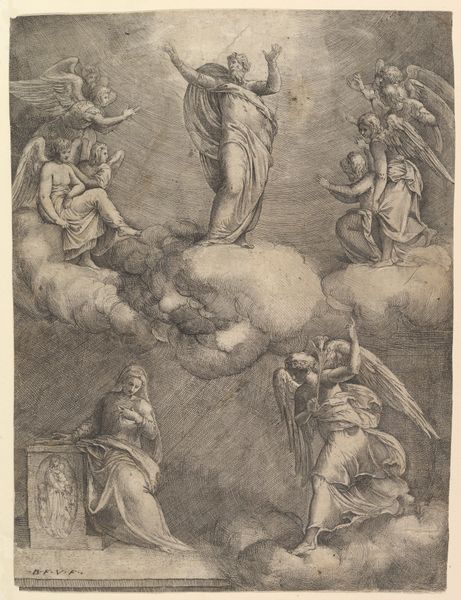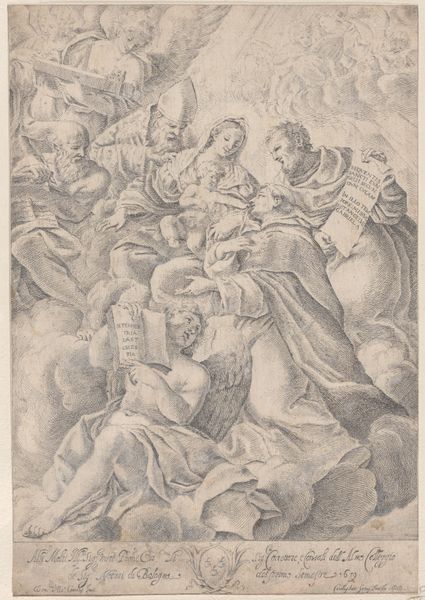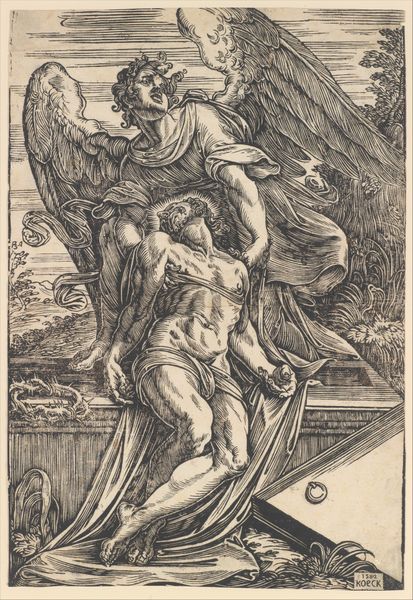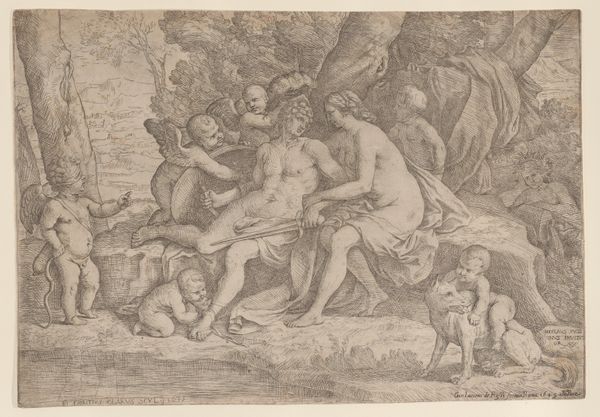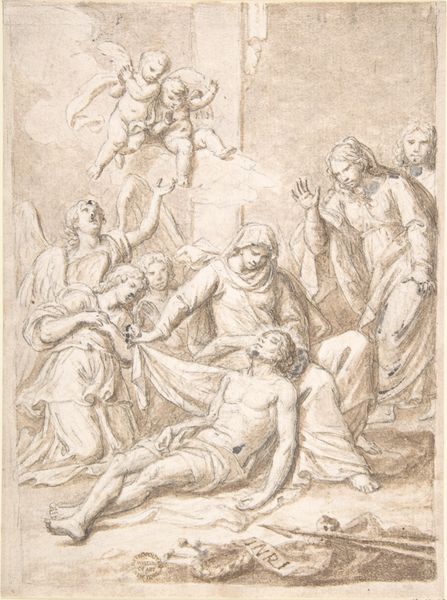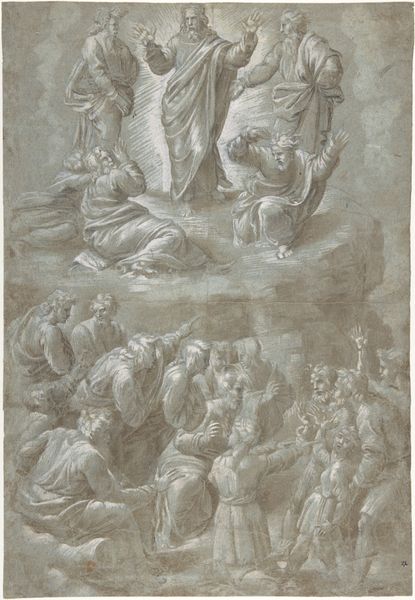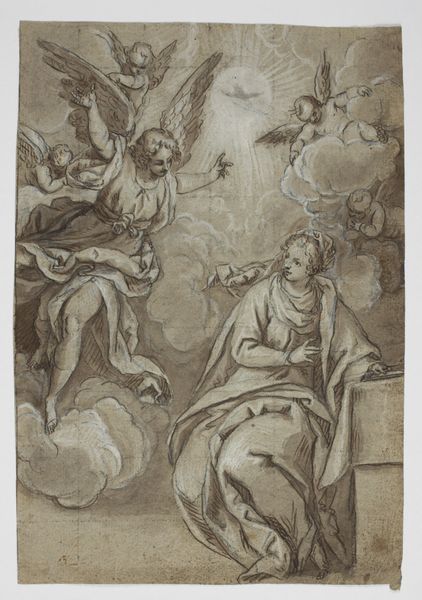
drawing, paper, ink, graphite, charcoal
#
drawing
#
narrative-art
#
baroque
#
charcoal drawing
#
figuration
#
paper
#
charcoal art
#
oil painting
#
ink
#
line
#
graphite
#
charcoal
#
history-painting
Copyright: Public Domain
Editor: So, here we have Giuseppe Nicola Nasini's "Dido auf dem Scheiterhaufen," a drawing done with charcoal, graphite and ink on paper. It’s incredibly detailed and dramatic! What do you see in this piece in terms of its historical significance? Curator: Well, immediately I see a classic example of Baroque history painting, emphasizing emotional intensity and theatricality. Beyond the narrative itself—Dido’s tragic suicide after being abandoned by Aeneas, drawn from Virgil’s "Aeneid"—it's important to consider how these stories were deployed within a social and political context. Who commissioned such works and why? How did images of female suffering function within a patriarchal society? Editor: That's a really interesting point. I guess I hadn't considered who this piece was created *for*. So, would a piece like this have served a moralizing function or was it just for aesthetic appreciation? Curator: Perhaps both, but let's consider its location – the Städel Museum. This museum's own history and collecting practices are part of the story. How did this particular drawing end up in this institution? An artwork’s journey, from the artist’s studio to a museum collection, reveals changing tastes and priorities over time. Editor: So, the act of collecting is also important. That adds a layer to it. What’s striking to me is the vulnerability of Dido; it almost seems like the piece is meant to elicit pity and potentially fear from the viewer as a way to perhaps dictate proper relationships between men and women. Curator: Exactly! These images operate within a larger cultural framework that shaped and reflected social norms. Studying this framework can help us see the social underpinnings. We could even analyze the artistic patronage that was going on at the time. The question is how effective or challenging was it at its time? Editor: I’ve definitely learned a lot by analyzing the artwork beyond just the aesthetic value. Curator: And I appreciate how you're looking at this piece and tying it to modern perspectives on social injustices. I hope listeners can be empowered by looking at how public art serves and addresses us as people.
Comments
No comments
Be the first to comment and join the conversation on the ultimate creative platform.

